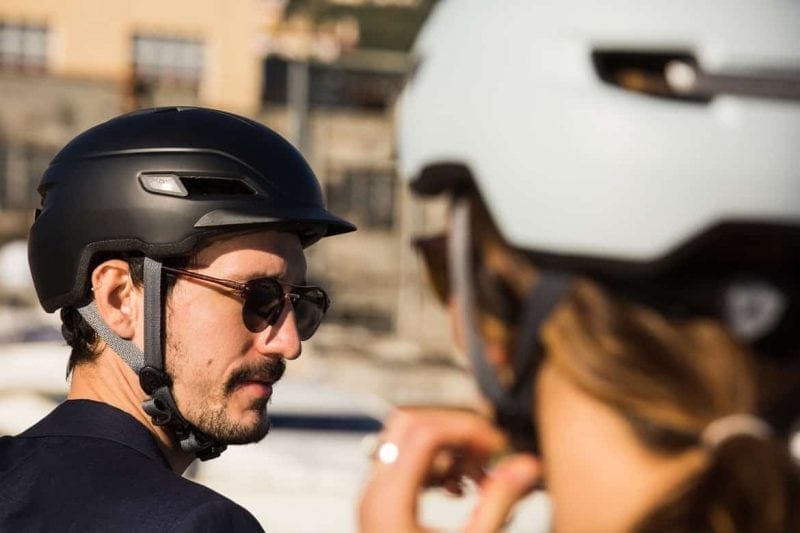There is no doubt that cycling has gained popularity in the past 5 years as more and more people are getting on the bike.
We’ve all heard about its benefits, from improving our overall health and fitness to being greener and the opportunity to expand our social circles.
Some say that cycling is the new golf. I think that’s not too far off.
However, today I’m not talking about the benefits (I will keep that for another day), but more importantly, as cycling gains popularity, so does another topic…
Cycling Safety.
We all start our cycling journey at different stages in our lives.
Even though I’ve been cycling since I was a small boy, there are still lots to learn for myself.
Many unwritten do’s and don’ts that many of us (unfortunately) learned the hard way or through hundreds of hours of cycling.
So, let’s dive right in…
Side note : Feel free to share these tips with your friends, family, club members, and other cyclists if you find them useful.
On This Page
Part 1 : A Roadworthy Bike
1. Ride the Right Bike Size
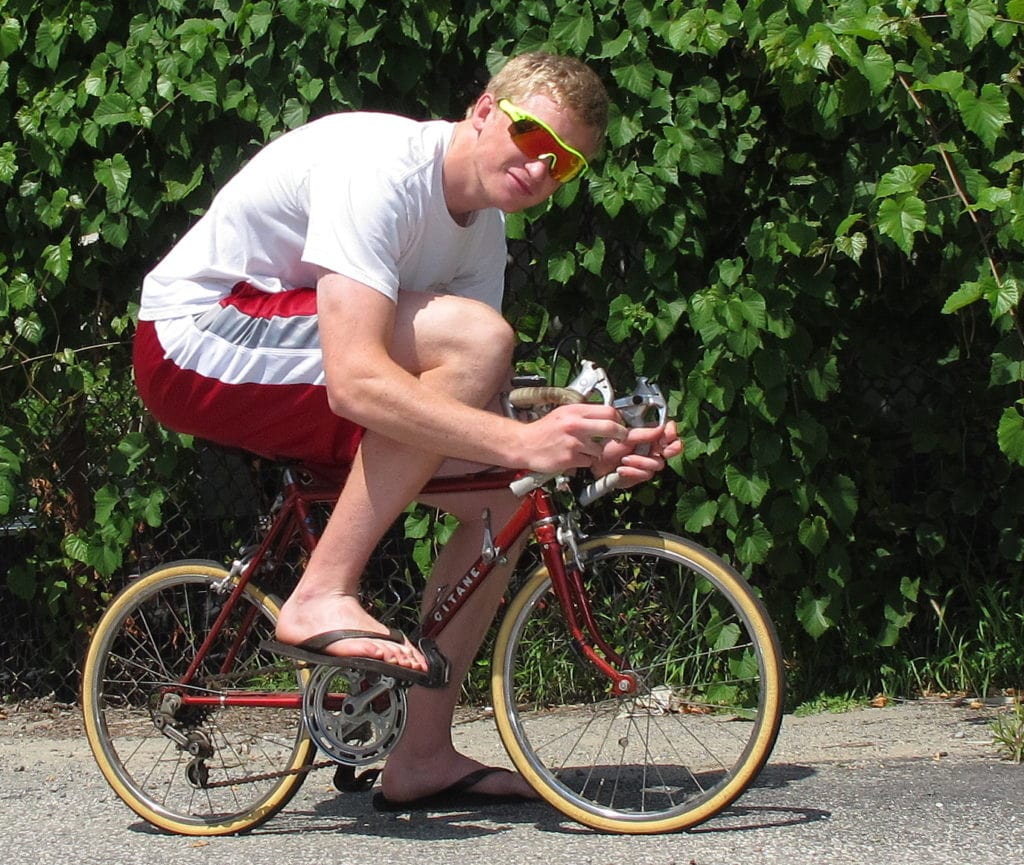
It would be best if you were riding a bike of the right size for your height. Riding a bike that is either too big or too small will hamper your bike handling and control.
Most (if not all) bike manufacturers publish a sizing chart consisting of many numbers to indicate the bike’s various measurements.
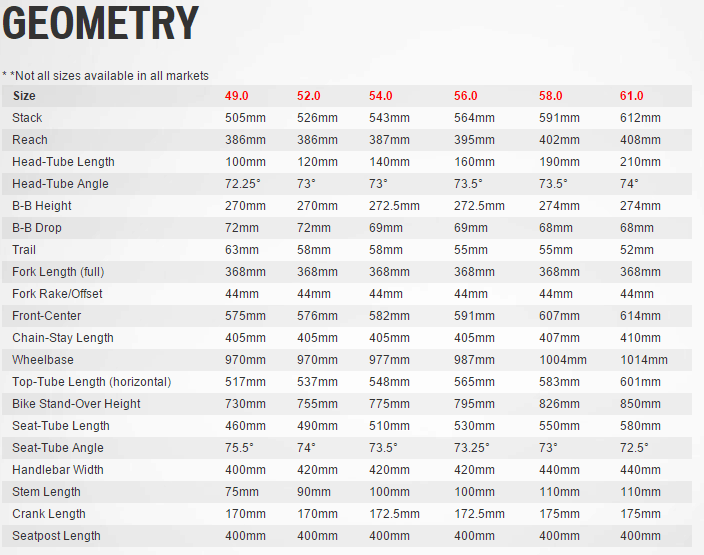
That cannot be very easy for most people.
As a general rule of thumb, you should be able to stand flat-footed over your bike’s top tube, and there should still be around 3 to 5cm of space left between your groin and the full box.
A better option is to consult an experienced bike salesperson to ensure you have the right bike frame size.
2. Check for Loose Nuts and Bolts
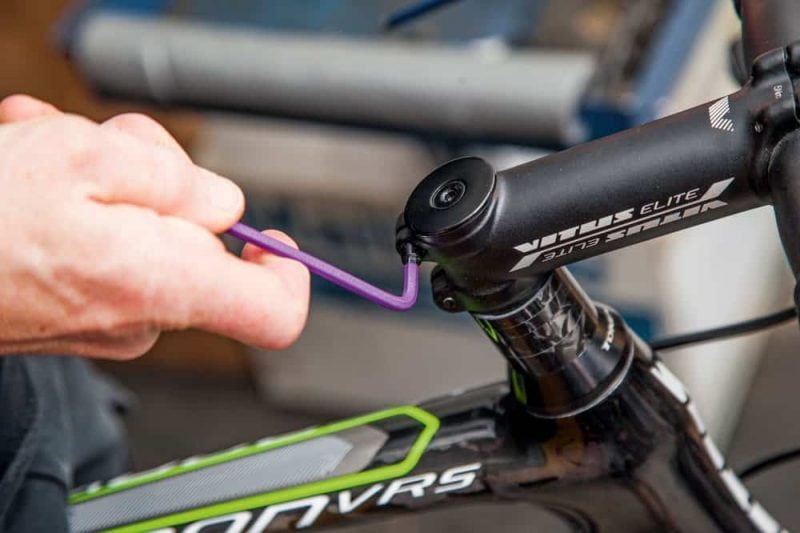
Most of us aren’t professional cyclists who have a dedicated full-time mechanic working on our bikes. Unless there’s a huge or complicated task ahead, most will stick to DIY instead.
You might also want to consider investing in a set of quality bike tools, to begin with.
Here are a few things to check for weekly.
- Check all the nuts and bolts of your handlebar, stem, seat post, pedals, and wheels’ quick release before heading out.
- Press your front brake and push the bike back and forth to check if the headset is loose.
- Tighten anything that comes loose and ensure there is no rattling.
3. Check and Pump Up Tires
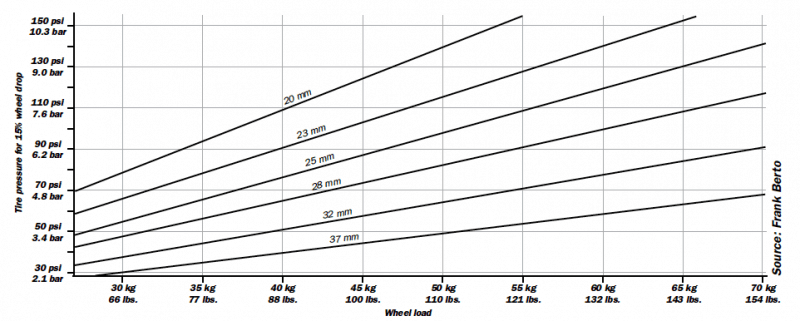
Your road bike tires should be correctly inflated to within the recommended air pressure range, usually printed on the tires’ sidewalls. Most cyclists have a floor pump at home.
Never exceed the tire pressure indicated on the sidewall, or you might risk a tire blowout, especially on scorching days. When it’s hot, the air inside the tire expands and pushes the inner tube outwards.
Remember to check if your tires are worn or if any deep cuts or debris are sticking on them.
Clean or change them if needed.
4. Check for Loose or Bent Spokes
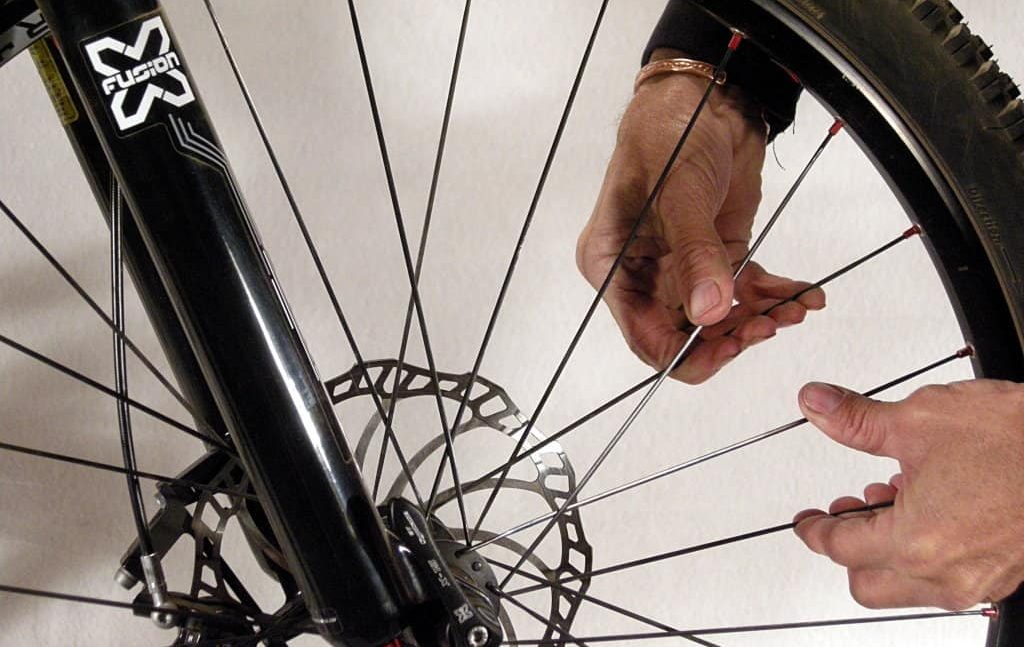
You probably won’t need to do this often unless you hit a pothole hard during your rides.
Ideally, you want to have a glance at your wheels weekly. Check if any of the spokes are loose or bent.
Spin the wheels and observe if they’re spinning true and not wobbling around.
5. Ensure the Brakes are Working
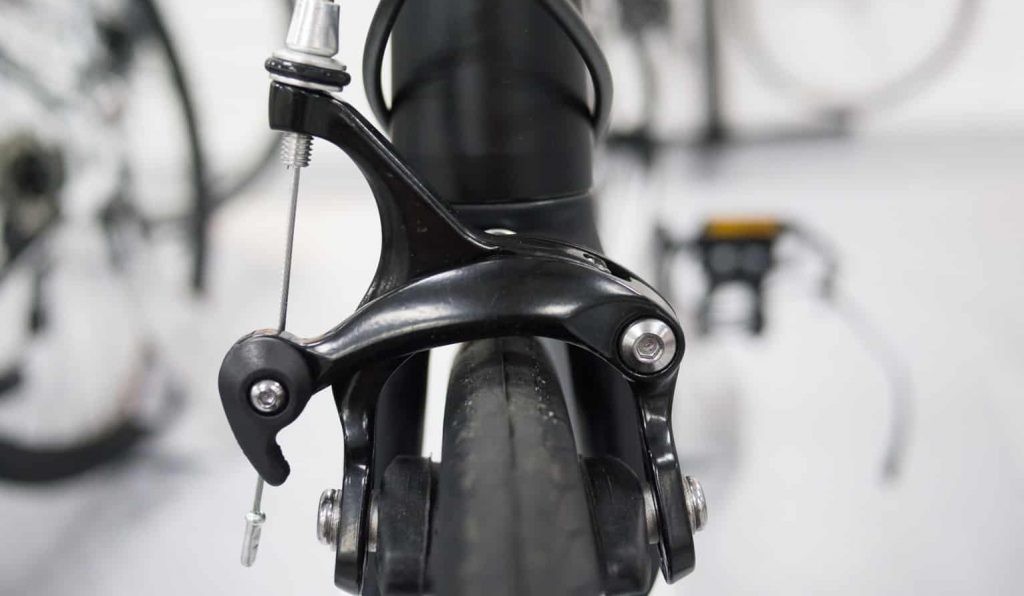
Check if your brake pads are rubbing against your wheels or the disc rotor. Adjust them if needed.
Spin the wheels, then press the brakes to check that the cables are working as expected and their brake pads are biting the wheels or disc rotor effectively.
Repeat 2-3 times.
6. Use A Headlight, Day and Night
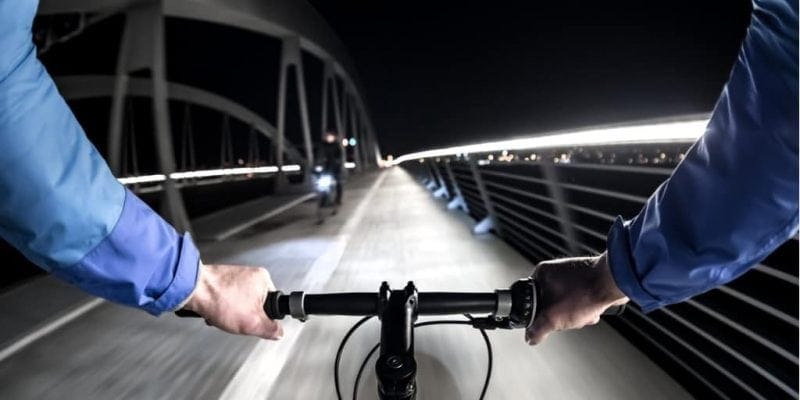
The front lights serve 2 purposes; for you to see when it’s dark and for you to be seen during the day. Newer models have a feature called Daytime Run Lights in which the light beams are altered to make you visible to drivers, especially around urban areas where there can be many distractions.
Take into consideration the brightness, weight, mounting type, and battery run times before buying the front lights.
I recommend setting your bike lights to flashing mode during the day as it attracts more attention from other drivers.
7. Use A Tail Light
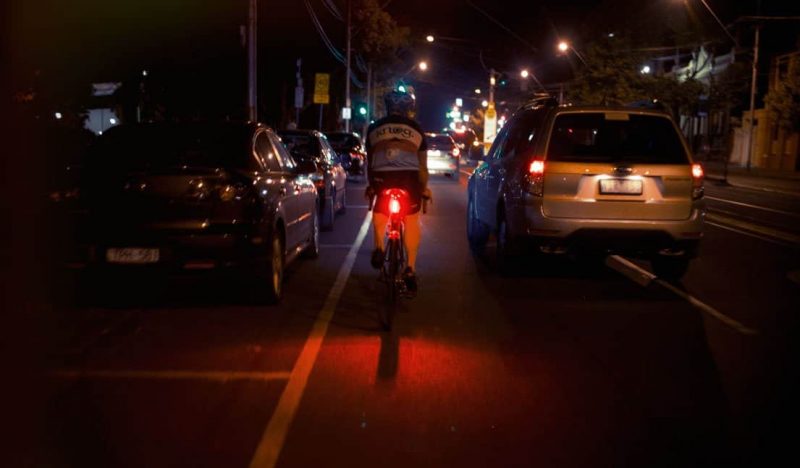
Taillights are important both during the day and night to help you be seen.
Set your lights on flashing mode to attract the attention of drivers behind you.
Always make sure your batteries are fully charged. You don’t want to run out of batteries mid-ride, especially in the dark.
If you’re looking for the brightest bike tail light that ensures you’re visible, look for one that has at least 70 lumens and above.
The Cygolite Hotshot 100 and Knog Blinder Road R70 are very popular among cyclists.
8. Use A Bike Bell
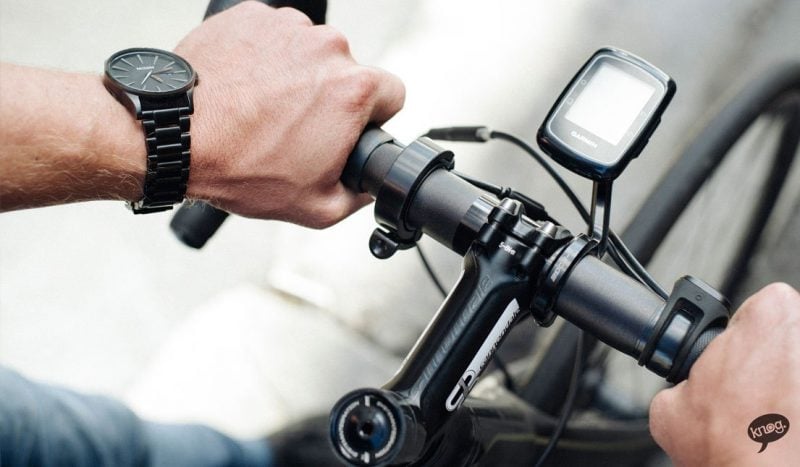
In some countries, bike bells are required by law. One such example is Queensland in Australia. There are also many places that the local laws don’t require you to use a bike bell.
However, I’d recommend having a bell as bikes are usually very quiet (unless you’re riding one that creaks so loudly or having a very dry chain). The last thing you want to be doing every time you pass someone is to scream.
So a bike bell will be handy and a polite way of saying, I’m coming, move away!
If you’re looking for a sleek and low-profile bell, have a look at the Knog Oi.
Part 2 : Cycling Gear
9. Wear High Visibility Clothing
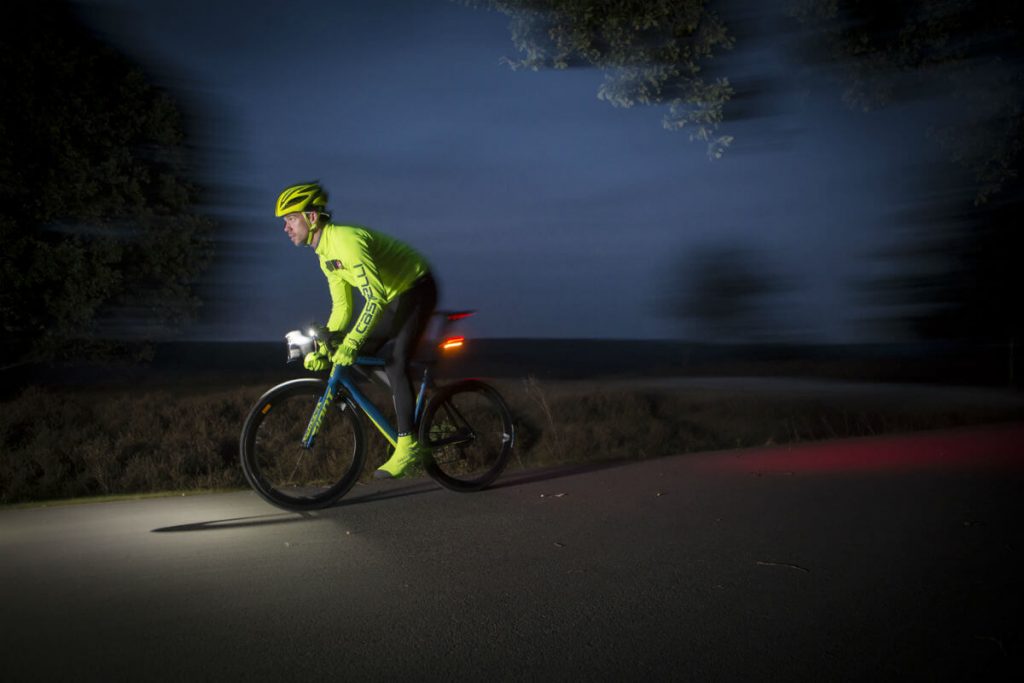
Wear bright cycling clothing both during the day and night to increase your visibility.
Alternatively, you can wear a high-vis vest over your dark clothing.
A cyclist without lights or bright clothing is almost invisible to a driver until the very last moment.
To further increase your visibility, you can use reflective Velcro straps on your ankles. The up/down movement tends to attract more attention.
10. Wear A Bike Helmet

There are differing opinions and laws around the world when it comes to wearing bike helmets.
In the U.S., bike helmet laws vary by state, locality, and cyclist’s age. The first bike helmet law was introduced in California in 1987 for children below 5 years old, followed by 1989 in New York.
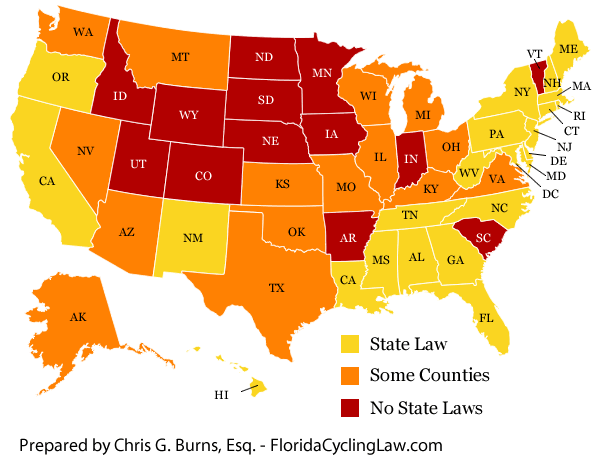
In Canada, each province and territory has different bike helmet laws.
A bike helmet is mandatory for cyclists of all ages in British Columbia, New Brunswick, Newfoundland and Labrador, Nova Scotia, and Prince Edward Island.
In the U.K., it’s not required by law for cyclists to wear a helmet. The bike helmet is a contentious issue, and there are polarizing opinions about its effectiveness.
Proponents believe that helmet helps prevent serious head injuries while opponents argue that wearing helmet discourages people from taking upcycling.
In Australia, all states introduced laws that require all cyclists to wear helmets between 1990 to 1992.
Recent bike helmet safety statistics showed that helmet usage is estimated to reduce the probability of serious head injuries by 50%.
If you’re wearing a helmet, you shouldn’t just wear any helmet but a helmet that fits your head’s circumference. Tighten and straps, and the helmet should feel snug.
Always make sure you wear the helmet correctly. Otherwise, you might risk looking like a complete Hubbard.
Ensure that they meet the international bike helmet safety standards like Snell, CSA, ASTM, BSI, and SAA. You’ll usually find a sticker inside the helmet.
Please DO NOT use the same helmet after it’s damaged in a crash. Helmets are designed to crack upon impact to protect your head.
11. Use Appropriate Amount of Sunscreen
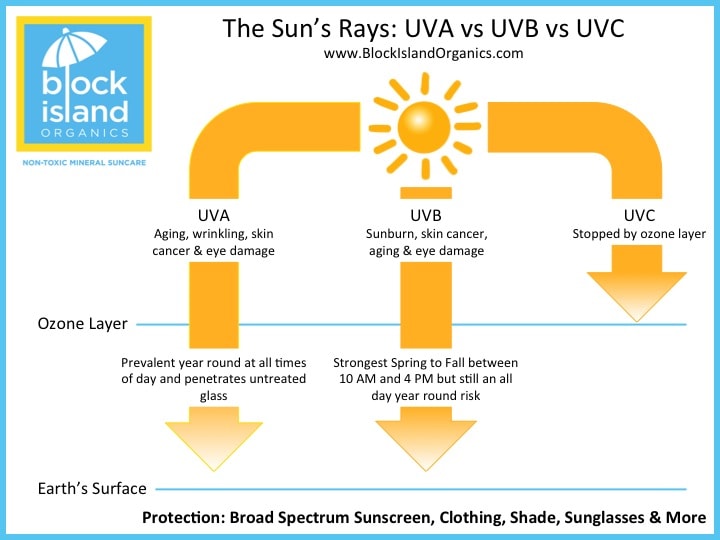
Use sunscreen if you’re riding under the sun, especially during the summer, to prevent sunburn and skin cancer in the long term.
A recommended amount is a rough tablespoon for each limb. Be generous, and don’t be stingy.
Aerosol sunscreen is not recommended as most people tend to apply them wrongly or insufficiently. And they also cost more. Use those that offer UV-A and UV-B protection.
Wear a pair of cycling sunglasses if it’s a sunny day so that it’s less strenuous to the eyes.
Part 3 : Route Selection
12. Map Out the Route Before Leaving Home
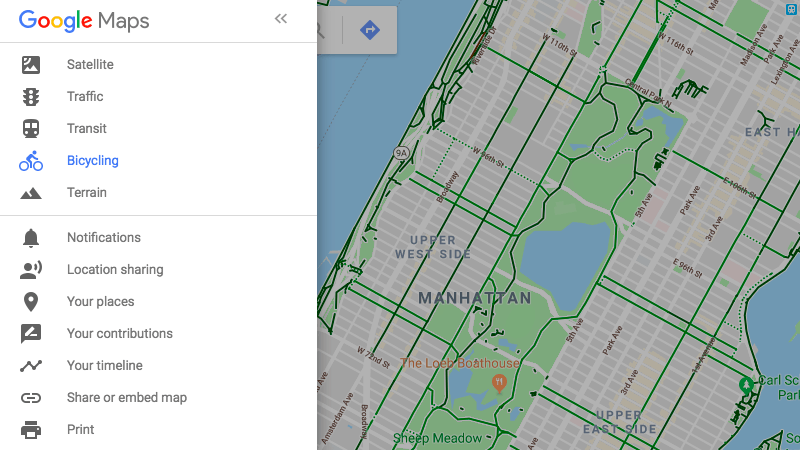
Do your research before you head out to ride, especially on unfamiliar roads.
You can use free tools like Google Maps, MapMyRide, or RideWithGPS to plan out your ideal route.
When you’re using these tools, toggle the Bike Paths button at the top right corner, and you’ll be presented with all roads that have bike paths.
Alternatively, you can also toggle Google Streetview to see how the road actually looks like.
13. Avoid Busy Intersections
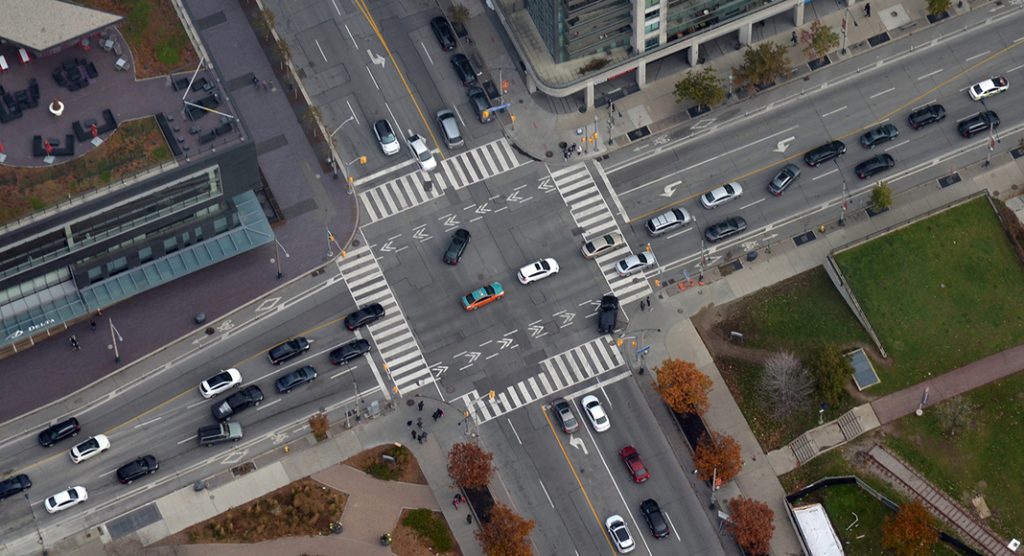
Try to avoid busy intersections as much as possible.
Recent Canadian research reveals that over 50% of drivers failed to look at cyclists at busy intersections due to other distractions.
You don’t want to be caught in the middle of traffic with cars zooming past you from every direction. Alternatively, make use of the pedestrian crossings or make a hook turn.
This might take up more time, but it’s definitely much safer.
14. Choose Wider Roads
There are two schools of thought concerning narrow roads.
On the one hand, it makes sense to try to avoid narrow roads wherever possible. There isn’t a lot of passing space, and you could hold up traffic behind you. Depending on where you live, drivers may force you to the side f the road as they overtake or try to bully you off the road.
The other side of the argument is narrow country roads. They are often quieter and have less traffic, and can be a joy to ride. While there may not be much space for overtaking, there will be less traffic (usually) in less hurry as a result.
15. Avoid Peak Hours
The period between 7 is to 10 am, and 4 pm to 7 pm is when most people are rushing to and from work.
Hence patience and tolerance levels are usually low.
Instead, try finding quieter roads or, better still, bike paths. They might make your ride slightly longer, but it’s much safer.
You don’t want to be mixing it up with impatient drivers!
16. Don't Ride on the Sidewalks
In every country, it is regarded as bad form to ride on the sidewalk unless there is no other way to progress. In the U.S, anyone above 13 is not allowed to ride their bike on the sidewalk.
Sidewalks are for pedestrians and not for riding bikes.
Not only do you endanger those pedestrians, but you also worsen their opinion of cyclists. You never know when that person will come across a cyclist and what they will do after such an experience.
Riding on sidewalks poses a danger to not only the pedestrians but also yourself. People move unpredictably, don’t always look when exiting a building or when traversing a sidewalk.
If cars need to cross a sidewalk to access parking or a store, they won’t necessarily be looking for a cyclist.
Part 4 : Good Cycling Habits
17. Be Aware of Your Surroundings
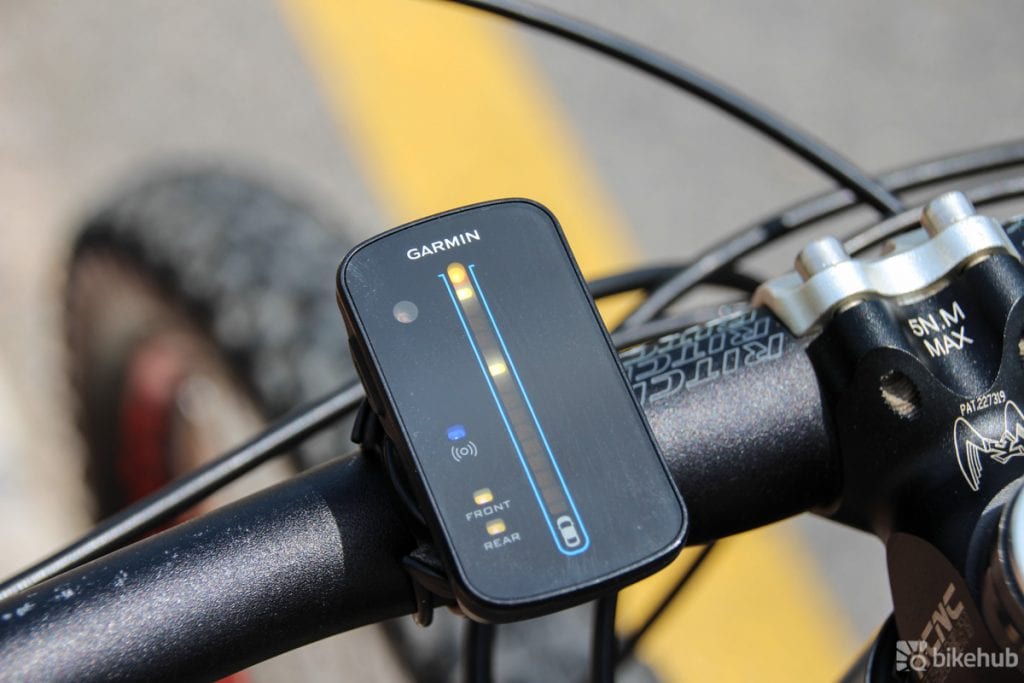
Always stay alert and be aware of everything happening around you. Keep an ear for oncoming vehicles from the back, especially trucks.
If you have the budget, you might want to consider a rear light with a built-in radar, such as the Garmin Varia Radar. When paired with a Garmin bike computer, it will detect vehicles approaching you from as far as 140 meters back.
18. No Headphones
Avoid using headphones to listen to music while you’re riding. If you have to use headphones, use bone-conducting headphones and not over or in-ear headphones.
When you’re on the road, you need all your senses alert for hazards. Even on quiet roads or out in the country, you need to be totally switched on to avoid these hazards.
We depend a lot on sound to detect traffic coming up from behind, vehicles traveling towards our road from a different direction, and the numerous other hazards on the roads.
Why compromise your safety for a little music?
Cyclists are vulnerable road users, so they need to take extra care. Situational awareness is an essential survival tactic and wearing headphones, while good for your Strava PB, is not suitable for a long and healthy life on two wheels.
19. Leave the Phone Alone
Phones take up too much of our attention and too much of our lives as it is.
Give it rest while on your bike.
If you need to navigate, stop at a safe place at the roadside and do it. Alternatively, consider using a bike phone mount to secure the mobile phone on the handlebars.
Cycling is a time for you to forget your work, troubles, stresses, and strains and have some me-time. Anything that distracts your attention from the road is a hazard and should be avoided at all costs.
If you have to take a call, find a safe place and stop. If you need to change your route, do the same. In many countries of the world, the same laws that have banned drivers from using a phone while on the move also include cyclists.
Don’t fiddle with your mobile phone while you’re riding, as you might lose your balance should you hit anything on the road.
20. Ride in A Predictable Manner
Most of us are taught to drive predictably when learning to drive.
Use the same principles when cycling. There is a lot to think about when you’re driving, so giving drivers one less thing to worry about is going to work in your favor.
Being predictable means riding in as straight a line as possible, not weaving or swerving where you can avoid it, clearly signaling your intent and not braking unless you need to.
The more predictable you are on the bike, the more comfortable drivers will find it to go around.
Some of this is down to knowing the road and looking far enough ahead to identify hazards in good time.
Look at least 30 meters ahead or as far as possible to identify road furniture, potholes, and other hazards that you need to avoid. Then you can take action steadily and predictably.
21. Both Hands on the Handlebar
Always have both your hands on the handlebar. Ideally, wear a pair of cycling gloves to improve your grip.
If you’re taking a drink, scan the road ahead, take your water bottle and have a quick sip. You don’t want to run into a pothole with 1 hand on the handlebar while the other holding your water bottle.
Depending on where you are, the road surfaces are too rough to allow you to use anything less than both hands. Even with a wider set of tires, the ride is rugged enough to demand that you remain in full control. It’s also a legal requirement in some countries to have both hands controlling the vehicle.
Besides, you’re not in the pro peloton. You can stop to remove a rain jacket or to take on fuel. Your life may depend on it.
22. Don't Ride at Speeds You're Uncomfortable With
If you feel the need, the need for speed, make sure you’re comfortable and capable of maintaining it safely. Slow down if you need to especially during twisty descents or over rough roads.
As long as you always ride at a speed appropriate to the weather, the road surface, and traffic conditions, you should be fine.
Riding above speeds that you’ve accustomed to puts not only yourself in danger but also other people around you.
You risk losing control of your bike and the vehicle behind might run into you.
23. Don't Drink and Ride
Cycling drunk is as dangerous as driving drunk.
A 2015 US Department of Transport statistics showed that 27% of cyclists killed had been drinking.
We don’t drink and drive anymore as it is now regarded as bad form. Don’t drink and ride either.
It is as illegal as getting behind the wheel in many places and can carry the same kind of penalties. It also offers the same kind of risk but without 2 tonnes of steel and airbags to protect you should something go wrong.
Staying safe on the road while cycling requires a high level of alertness, and being drunk puts not only yourself but other motorists in danger.
24. Act like A Vehicle
When you ride on the roads, you are considered a vehicle in the eyes of the law.
So behave like one.
This can be tough because cyclists are not viewed as vehicles and certainly not as equals in most countries. Yet, we have the same rights and the same responsibilities on most roads in most countries.
With those rights come responsibilities.
Obey traffic laws, stop at junctions and traffic lights, use lights when required, and behave as you would expect others to act on the road. It’s not only your safety at stake here, but you have an opinion to balance too.
Drivers who see cyclists ignore traffic rules soon take a dislike to us. A bad opinion carries a lot longer to change than a good one!
25. Always Stop at Red Lights
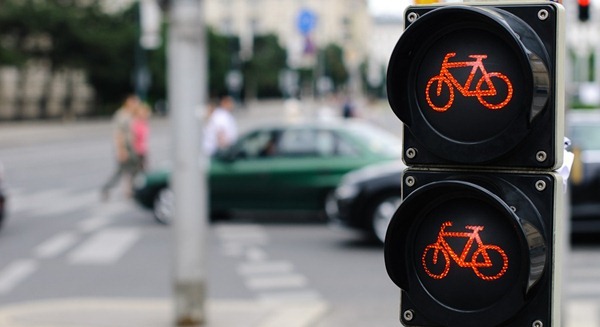
The above advice on acting like a vehicle is especially true at traffic lights. Ride like you’re a vehicle and behave like it.
Stop at red and don’t jump the lights.
Even if other riders do, don’t join them. Not only does it pose a serious risk to you, other traffic or crossing pedestrians, it also turns public opinion against us.
Why should a driver respect cyclists when cyclists don’t respect the road or other drivers’ rules?
It’s bad enough getting the dirty looks or cars shifting close together to stop us from cutting through traffic perfectly legally. Start jumping lights, and you don’t just have the danger to contend with but punishment driving too.
It may not be you who suffers from this but the next rider that comes along. Do you want that on your conscience?
26. Don't Ride Near the Curbs
Don’t ride near the curbs.
Give yourself 2-3 feet of space to bail out in case a vehicle comes too close.
Ride with the traffic flow. Simple as that. This research showed that riding against the traffic is 3 times more dangerous and 7 times for children.
27. Stay Out of the Vehicle's Blind Spot
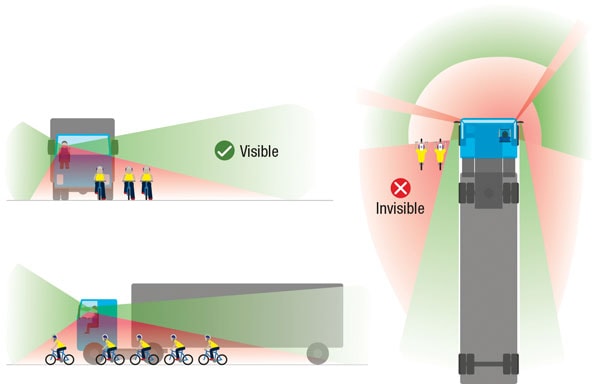
Different sized vehicles have other sized blind spots in different positions.
Most of us cyclists are also drivers, so you should already have a good idea about where a blind spot is likely to be.
Trucks have huge blind spots but are slowly overcoming them with cameras. Don’t depend on the drivers seeing you and ride defensively around larger vehicles.
The general rule is that if you cannot see the vehicle’s side mirror, they cannot see you. If you’re in traffic and negotiating vehicles, look ahead of them and consider what their next action might be.
Is there an opportunity for them to turn in front of you?
Try putting yourself in the position of the driver. Look at the road ahead, speed of movement, and the likelihood of that vehicle wanting to move into your path.
If you think they might hang back. It’s as simple as that.
28. Always Use Hand Signals
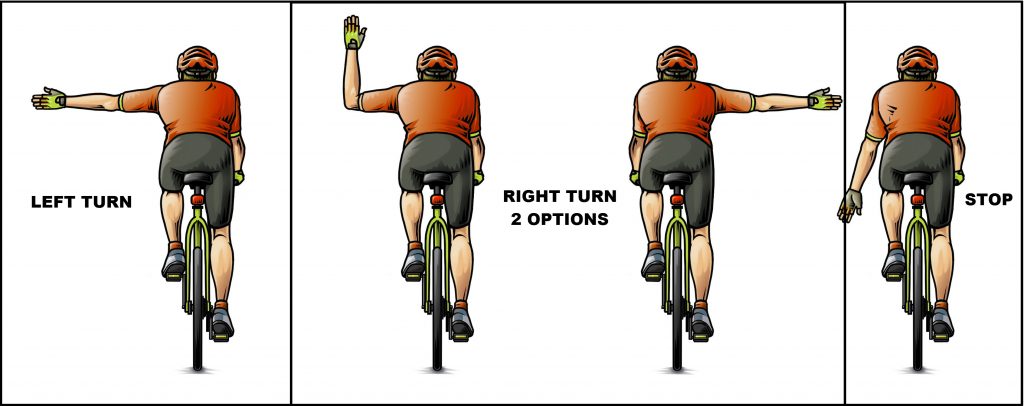
Cycling hand signals are universal and should be universally understood by all drivers.
You should use hand signals to indicate your next move. As when driving, indicate ahead of the move and not during it.
Give other road users time to adjust or anticipate your move and then make the move if it’s safe.
Clearly indicating your intent shows other road users that you value their safety as well as yours and is just good manners. Anything you can do to promote harmony on the road is a move in the right direction.
29. Slow Down at Intersections
Based on the 2015 National Highway Traffic Safety Administration report, 28% of cyclist fatalities occurred at intersections.
The same is likely true in other countries too. Intersections or junctions are a hazard whatever vehicle you use. It requires your full attention and anticipation of other road users and awareness of risks you may not have detected yet.
Approaching an intersection at speed doesn’t give you anywhere near enough time to process all that information.
It also shrinks reaction time significantly should you need to take avoiding action. Use the appropriate speed for the road and conditions, and always give yourself enough time to react to the unforeseen.
30. Watch Out for Parked Cars
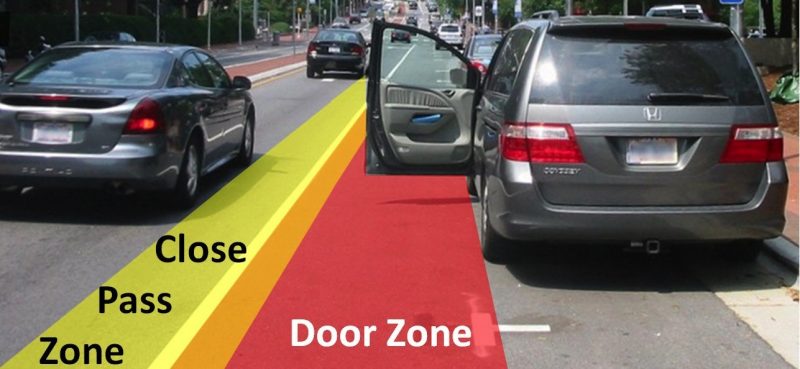
Passing parked cars are where dooring happens. The person in the car doesn’t look properly and opens the door in your path.
It’s a widespread occurrence in towns and cities across the world. If you’re riding beside parked cars, slow down and look through their rear windows to see if anyone is in the car or planning to open the door.
31. Look and Look Again Before Entering Roundabouts
Roundabouts are another tricky situation for cyclists. Always slow down and prepare to stop when approaching roundabouts.
Treat them as a junction and give yourself space and time to assess and process.
Don’t assume that you can beat the vehicles already inside the roundabout because 9 times out of 10, you won’t. Take it slow and be prepared to wait an extra few seconds to guarantee a safer passage.
Always look to your right (if you’re from a left-hand drive country) and left (if you’re from a right-hand drive country) before entering a roundabout.
Part 5 : Important Things to Bring
32. Bring Spare Cash
You should always carry cash with you when out on your bike. Some change for a payphone and a note for a taxi or to keep a tire inflated enough to get you home.
While most of us ride with mobile phones, if you ride out into the country, you may not always have a signal.
Keeping a couple of coins in your saddle bag with your other tools ensures you can always call home if needed. Or enough to get a cab home if you can get one in case of a major mechanical problem.
33. Have Your Emergency Contact Details on Your Mobile Phone
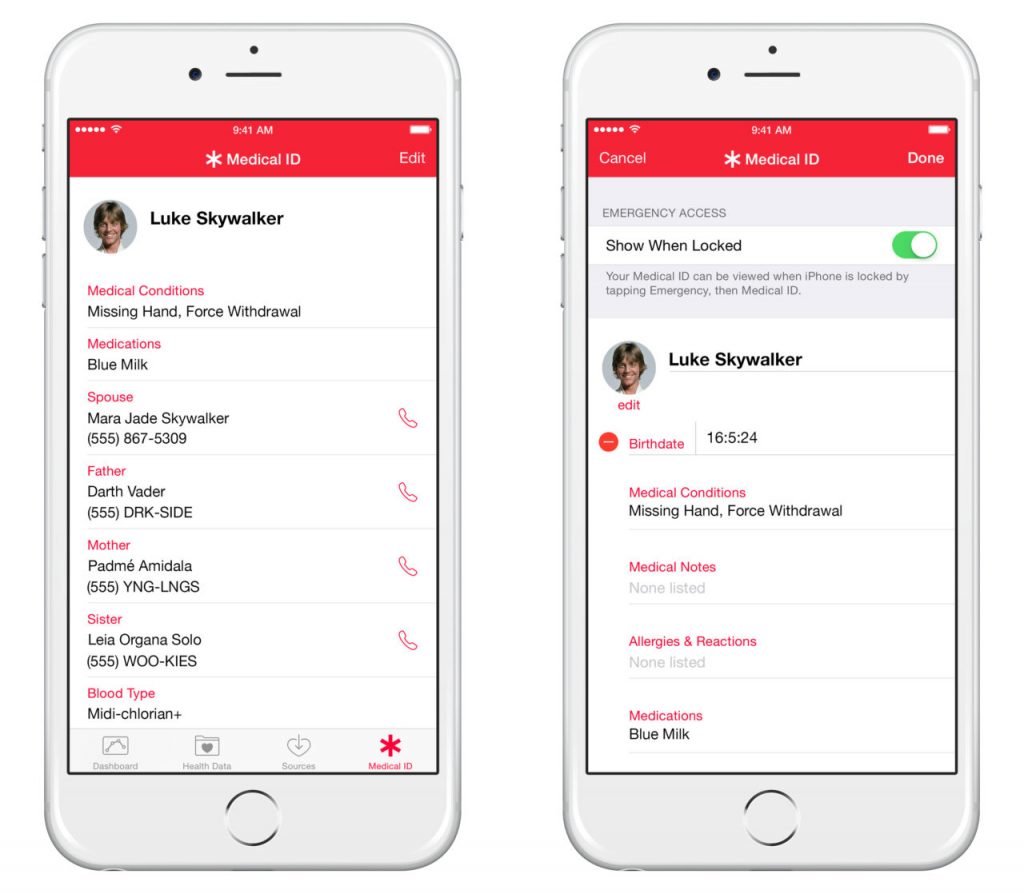
It’s a good practice to have your emergency contact details on your phone’s lock screen. You can easily do so on both Apple iPhones and all Android phones.
If you’re knocked down unconscious at the side of the road, at least someone will know who to contact without having to unlock your phone.
34. Wear A Road ID
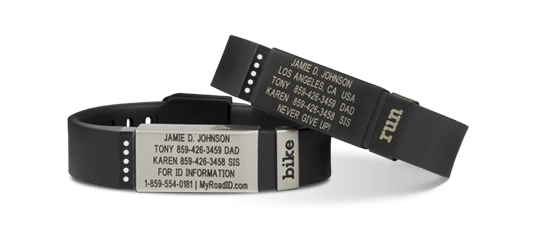
Alternatively, wear your RoadID on your wrists.
Having an analog version of your contact details where someone doesn’t have to unlock your phone to get at them could literally be a lifesaver. This is especially true if you have any underlying medical conditions or allergies that a first responder needs to know about.
You can customize important details like your emergency contact person, age, blood type, allergies, and medications which are important to the paramedics and doctors treating you.
35. Have A Saddle Bag
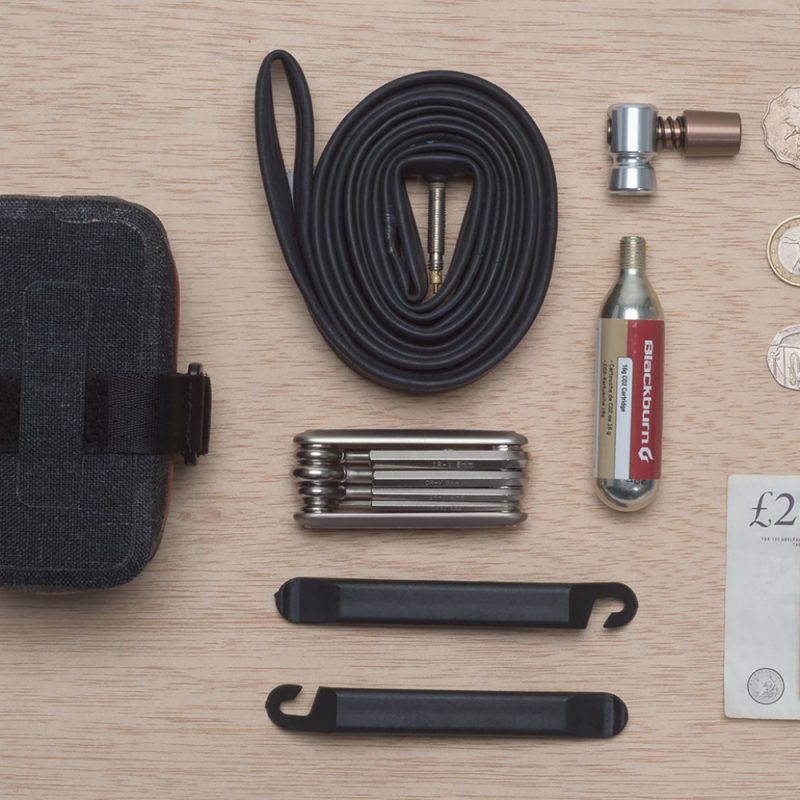
The debate for and against saddlebags will still be raging long after I have hung up my cleats. It’s practicality (or perhaps responsibility) versus aesthetics, but to my mind, practicality wins every time.
At the minimum, you should have a spare tube and 2 tire levers in your saddlebag. Have peace of mind, carry a multitool, 2 spare tubes, and a patch kit if you often ride on rough roads.
Read more here if you want to know what I carry in my saddlebag.
Don’t forget your hand pump too or a CO2 inflator.
Author Recommended Reads

